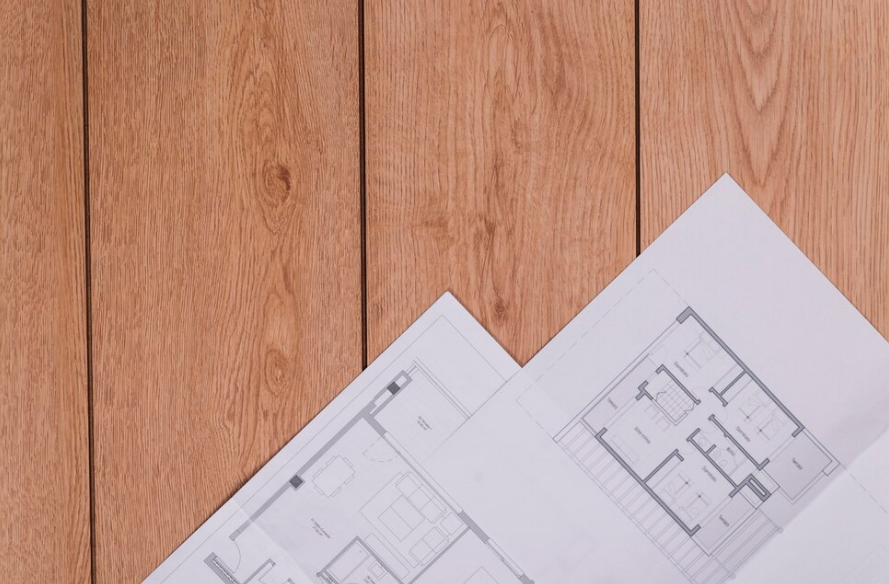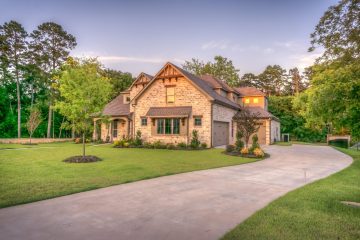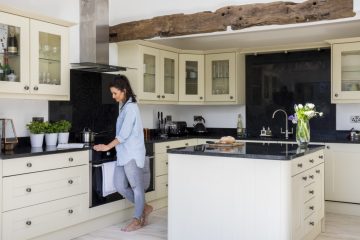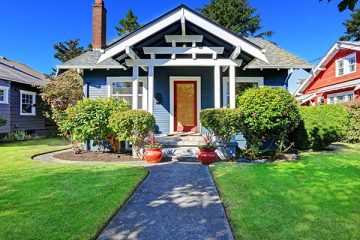In the realm of modern architecture, the open floor plan design has emerged as a popular choice for homeowners and designers alike. This design approach, characterized by minimal use of walls and partitions, fosters a sense of openness and fluidity within a living space. As lifestyles evolve, the demand for flexible and multifunctional living areas has grown, making open floor plans an ideal solution for contemporary homes.
The Appeal of Open Floor Plans
Open floor plans offer numerous advantages that cater to the needs and preferences of modern living. One of the primary benefits is the enhanced sense of space. By eliminating unnecessary walls, open floor plans create a seamless flow between different areas of the home, making even smaller spaces feel larger and more inviting. This design also maximizes natural light, allowing it to permeate throughout the home, creating a bright and airy atmosphere.
Additionally, open floor plans promote better social interaction. In a traditional home layout, walls and partitions can create barriers that isolate family members and guests. An open floor plan, however, encourages connectivity by merging the kitchen, dining, and living areas into a single, cohesive space. This setup is particularly advantageous for families, as it allows parents to keep an eye on their children while cooking or engaging in other activities. It also makes entertaining guests more enjoyable, as hosts can interact with their visitors while preparing meals.
Design Considerations for Open Floor Plans
When designing an open floor plan, several factors need to be considered to ensure the space is both functional and aesthetically pleasing. One of the key considerations is the layout. The arrangement of furniture and the flow of movement within the space are crucial to maintaining a sense of order and purpose. For instance, defining different zones within the open space—such as a distinct area for dining, lounging, and cooking—can help create a sense of structure without the need for walls.
Another important aspect is the use of color and materials. Consistency in color schemes and materials can help unify the space and create a cohesive look. However, strategic variations can also be employed to delineate different functional areas. For example, a change in flooring material or a variation in wall color can subtly indicate a transition from the kitchen to the living area.
Storage solutions are also essential in open floor plans. With fewer walls, there is often less space for traditional storage options like cabinets and closets. Therefore, integrating built-in storage solutions, such as kitchen islands with cabinets or bookshelves that serve as room dividers, can help maintain a clutter-free environment while also adding to the overall design aesthetic.
The Role of Technology: Floor Plan Creators
In the design process of an open floor plan, technology plays a pivotal role. One of the most valuable tools for homeowners and designers is the floor plan creator. These digital tools allow users to visualize and plan their living spaces with precision and ease. A floor plan creator can help in experimenting with different layouts, furniture arrangements, and design elements before making any physical changes.
Floor plan creators come with various features that cater to both novice users and professional designers. They often include drag-and-drop functionality, which simplifies the process of adding and arranging furniture and other elements. Many also offer 3D visualization, providing a realistic view of how the space will look once completed. This feature is particularly beneficial for open floor plans, as it allows users to see how different areas will flow into one another and how natural light will impact the space.
Moreover, floor plan creators can help in making informed decisions about space utilization and design elements. For instance, they can provide measurements and scale, ensuring that furniture and fixtures fit perfectly within the space. This can prevent costly mistakes and ensure that the final design meets the needs and preferences of the homeowners.
Challenges and Solutions in Open Floor Plan Designs
While open floor plans offer numerous benefits, they also come with their own set of challenges. One of the primary challenges is noise control. With fewer walls to act as sound barriers, noise can easily travel throughout the space, potentially causing disruptions. To mitigate this issue, designers can incorporate sound-absorbing materials such as rugs, curtains, and upholstered furniture. Acoustic panels can also be strategically placed to reduce noise levels.
Another challenge is maintaining privacy. Open floor plans can make it difficult to find private areas within the home. To address this, homeowners can use flexible partitions such as sliding doors or curtains that can be drawn to create temporary privacy when needed. Additionally, furniture arrangement and strategic placement of plants or decorative screens can help create intimate nooks within the open space.
Temperature regulation is another consideration. Large, open spaces can be harder to heat and cool evenly. To ensure comfortable living conditions, it is important to have a well-designed HVAC system that can efficiently manage the temperature throughout the space. Ceiling fans, strategically placed vents, and zoned heating and cooling systems can also help maintain a comfortable environment.
Incorporating Personal Style in Open Floor Plans
One of the most appealing aspects of open floor plans is the ability to infuse personal style into the design. Without the constraints of walls, homeowners have the freedom to experiment with various design elements and create a space that reflects their unique tastes and lifestyle. For example, a mix of modern and vintage furniture can create an eclectic and inviting atmosphere. Bold colors and patterns can be used to create focal points and add visual interest to the space.
Additionally, the use of art and decor plays a significant role in defining the character of an open floor plan. Large artworks, statement lighting fixtures, and carefully curated decor items can enhance the aesthetic appeal of the space and create a cohesive look. Personal touches such as family photos, travel souvenirs, and heirloom pieces can add warmth and personality to the home.
Future Trends in Open Floor Plan Designs
As the concept of open floor plans continues to evolve, several trends are emerging that cater to the changing needs and preferences of homeowners. One notable trend is the integration of smart home technology. From automated lighting and climate control to advanced security systems, smart home features are becoming increasingly popular in open floor plan designs. These technologies not only enhance the functionality of the space but also contribute to a more efficient and convenient living experience.
Another trend is the incorporation of sustainable design elements. As environmental awareness grows, more homeowners are seeking ways to reduce their carbon footprint. This can include using eco-friendly materials, incorporating energy-efficient appliances, and designing the space to maximize natural light and ventilation. Sustainable design not only benefits the environment but also creates a healthier and more comfortable living space.
The trend of biophilic design is also gaining traction. This design approach emphasizes the connection between indoor spaces and the natural environment. Incorporating elements such as indoor plants, natural materials, and views of the outdoors can enhance the well-being of occupants and create a serene and calming atmosphere.
Conclusion
Open floor plan designs have revolutionized modern living by offering a flexible, spacious, and aesthetically pleasing alternative to traditional home layouts. By fostering a sense of openness and connectivity, these designs cater to the dynamic lifestyles of contemporary homeowners. With careful consideration of layout, materials, and technology, an open floor plan can transform a home into a harmonious and functional space that reflects the unique personality and preferences of its occupants. As design trends continue to evolve, open floor plans will undoubtedly remain a popular choice, adapting to the needs and aspirations of future generations.




